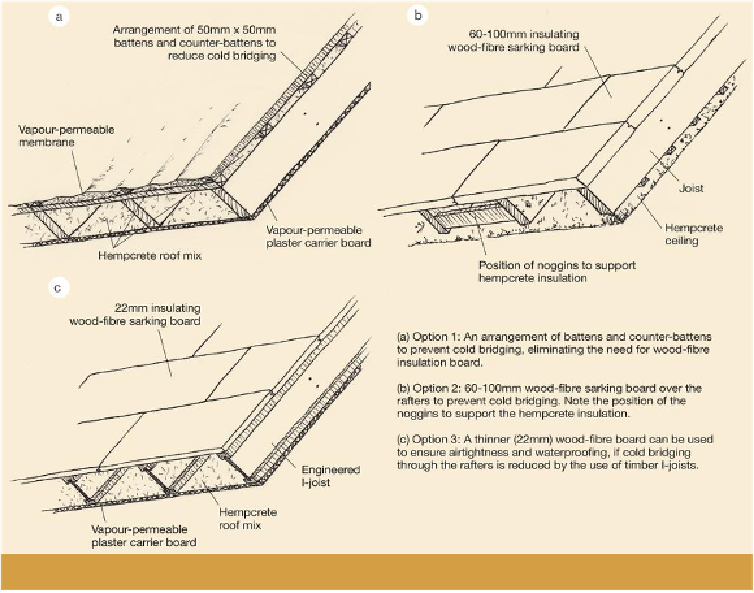Civil Engineering Reference
In-Depth Information
Down the length of the rafters, noggins will be needed to stop each newly filled section
of hempcrete from sliding down the roof and compressing that at the bottom. (These are
needed in all three options illustrated in Figure 31, but for simplicity they are shown in
31(b) only.)
Figure 31.
Hempcrete insulation in a pitched roof.
The spacing of these noggins will depend on the pitch of the roof, with steeper roofs need-
ing them at smaller intervals. These noggins can be thinner than the main rafters by 50mm
at the top and bottom, in order to reduce any cold bridging effect. For example, if the main
rafter were 200mm deep, the noggin could be 100mm deep, with its base 50mm above the
base of the main rafter.
The simplest, and cheapest, method of insulating a roof with hempcrete is shown in Figure
31(a). To take full advantage of the loose-fill nature of the material, the main rafters have
two sets of counter-battens, at least 50mm x 50mm section, fixed on top of them: the first

Search WWH ::

Custom Search